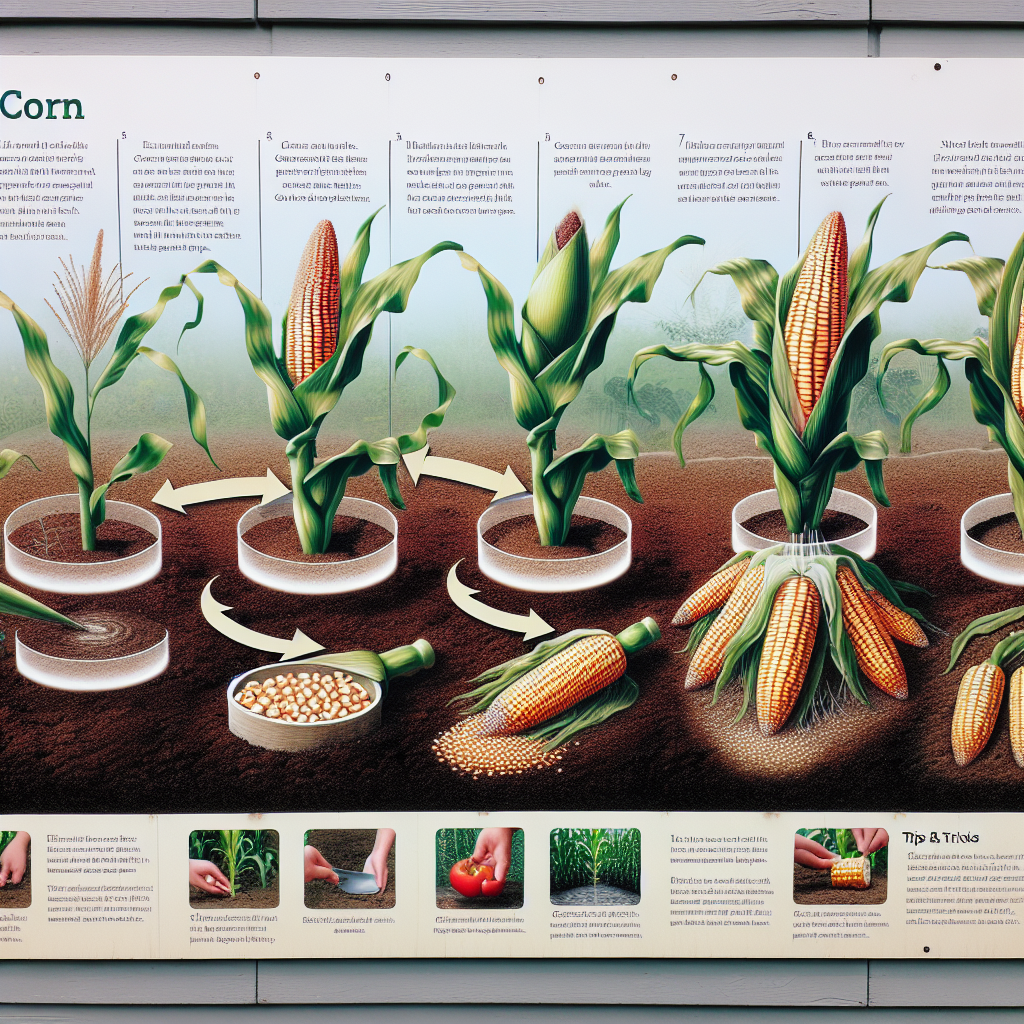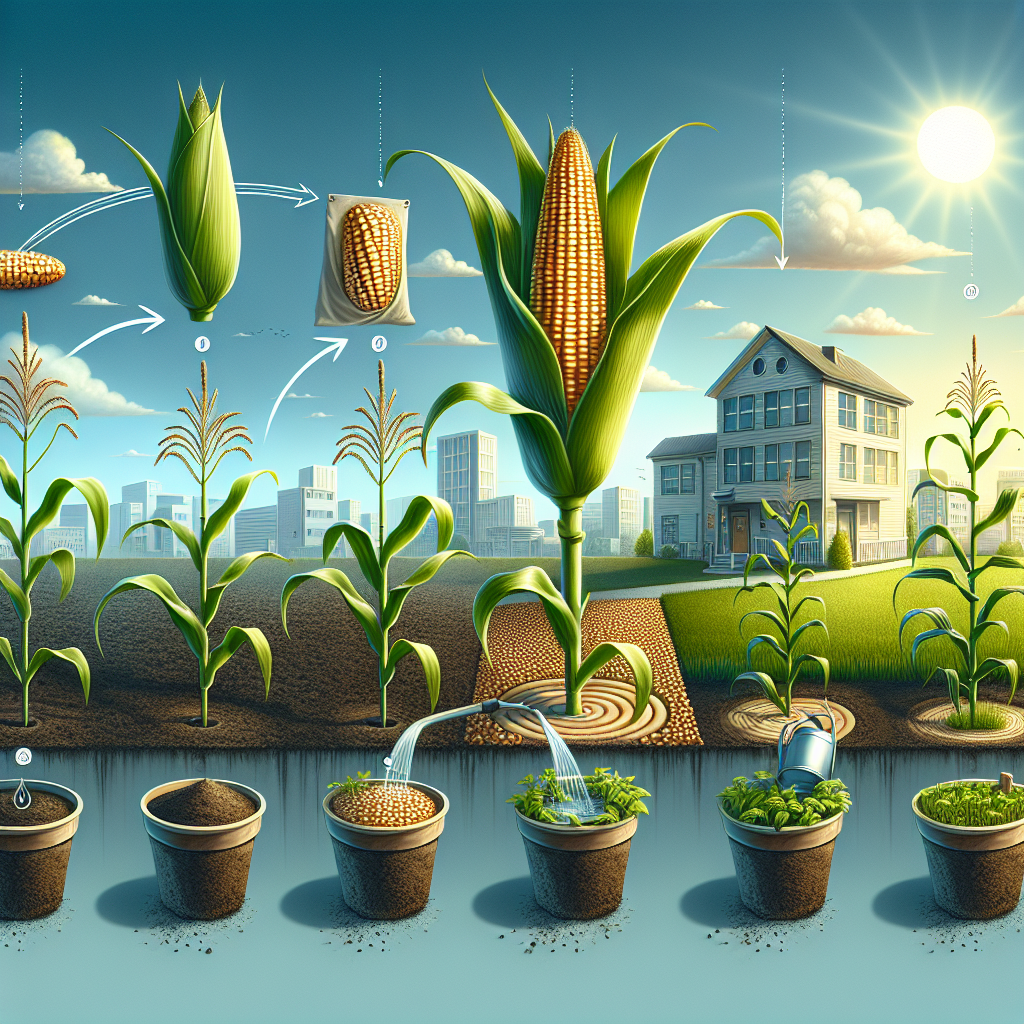Unleashing the Secrets to Successful Corn Cultivation at Home
Corn is one of the most popular and widely grown crops around the world. Rich in nutrients and versatile in its usage, corn has become a staple in many cuisines and food products. While traditionally cultivated on large farms, growing corn at home can be a rewarding experience. By following a few essential steps, gardeners can unleash the secrets to successful corn cultivation right in their own backyard.
1. Choosing the Right Variety
Selecting the right variety of corn is crucial for successful cultivation at home. There are three main types of corn: sweet corn, field corn, and popcorn. Sweet corn is what most people are familiar with – it has a high sugar content and is harvested when the kernels are tender. Field corn, on the other hand, has a lower sugar content and is mainly used for animal feed or processing into various products like oil or flour. Popcorn has smaller kernels that pop when heated.
Within these categories, there are numerous hybrid and heirloom varieties available, each with its own characteristics such as flavor, texture, and maturity time. It’s important to consider your climate conditions and personal preferences when choosing which variety of corn to grow at home.
2. Preparing the Soil
Corn requires well-draining soil with good fertility levels. Start by preparing the soil in advance to provide optimal growing conditions for your plants. Remove any weeds or debris from the cultivation area and loosen the soil using a tiller or garden fork.
To improve fertility levels, add organic matter such as compost or well-rotted manure to enhance nutrient availability for your plants. This will also help improve moisture retention while ensuring proper drainage.
3. Sowing Seeds
Corn is best grown from seeds rather than transplants. Planting seeds directly into prepared soil provides them with more space to establish healthy root systems.
Sow your seeds about 1 inch deep and 4-6 inches apart, spacing rows about 24-36 inches apart. This allows enough room for the plants to receive adequate sunlight and airflow. As corn is wind-pollinated, planting in blocks rather than long single rows will help maximize pollination and ensure good kernel development.
4. Watering and Fertilizing
Corn requires consistent moisture levels throughout its growing season. Adequate irrigation is especially important during pollination time, as drought stress can result in poor ear development.
Water your corn plants regularly, ensuring the soil remains evenly moist but not waterlogged. Mulching around the base of each plant can help retain soil moisture while suppressing weed growth.

Fertilize your corn plants with a balanced fertilizer or incorporate slow-release granules into the soil before planting. Nitrogen is particularly important for corn growth, so choose a fertilizer with higher nitrogen content to promote healthy leaf and stalk development.
5. Managing Pests and Diseases
Like any crop, corn can face challenges from pests and diseases. Common pests that attack corn include aphids, armyworms, and corn earworms. To manage these pests naturally, you can introduce beneficial insects like ladybugs or lacewings or use organic insecticides if necessary.
Diseases such as gray leaf spot or common rust may also affect your corn plants. Ensure good airflow by spacing plants properly and avoiding overcrowding to reduce humidity levels, which can promote disease development.
Regularly inspect your plants for signs of pests or diseases so you can take immediate action if needed. Early intervention is key to preventing further damage to your crop.
6. Harvesting Time
Determining when it’s time to harvest your corn depends on the variety planted. Sweet corn is harvested when the silks at the end of each ear turn brown and dry out, indicating that the kernels are fully developed but still tender.
To check for maturity readiness, peel back a small section of husk and squeeze a kernel. If a milky liquid squirts out, the corn is ready for harvest. Field corn, on the other hand, is left to dry on the stalk until the kernels have hardened.
7. Storing and Using the Harvest
Once harvested, sweet corn should be consumed as soon as possible to enjoy its full flavor. If not consumed immediately, it can be stored in the refrigerator for a few days. Field corn should be dried thoroughly before removing it from the cob and storing it in a cool, dry place.
Besides eating fresh or dried corn, you can also blanch and freeze it for future use or preserve it by canning or making delicious corn-based recipes such as cornbread or corn salads.
Growing your own corn at home provides not only fresh produce but also an opportunity to connect with nature while nurturing plants from seed to harvest. By following these secrets to successful corn cultivation, you’ll be well on your way to enjoying crisp and delicious ears of corn right from your backyard!













